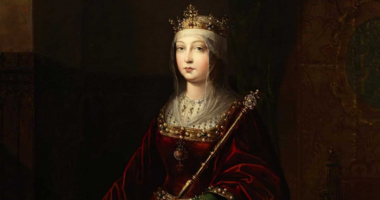Top 7 Interesting Facts about El Cid
El Cid was a Castilian Knight who gained power in medieval Spain, lost it, turned against his country, and then returned to rule his kingdom. El Cid was as ... read more...much of a legend as he was a real-life person, and the tales that have been told about him that have made him a folk hero have disguised much of what we do know about him. But this isn't a story, look let's at some facts instead. Here are the seven interesting facts about El Cid.
-
"El Cantar de Mio Cid", often known as "The Poem of My Lord," is the earliest extant epic poem to originate from Spain and tells the tale that made Rodrigo famous as the legendary El Cid. El Cid's life. The narrative starts with El Cid's banishment after being falsely accused of stealing money from King Alfonso VI of Castile and León by his adversaries. El Cid's exile from Spain is where the narrative begins, almost halfway through. To restore his name, he sets out to conquer the Arabian regions close to Spain with little more than a devoted crew. He took part in the wars with the Moorish troops and took Valencia to reclaim his dignity.
By performing these brave deeds, he eventually gains enough territory to win back the Spanish king's favor and restored his honor. The infants (princes) of Carrión are married to the daughters of El Cid by the monarch himself. However, the infants promise vengeance after El Cid's troops disgrace the princes for being cowards. They abuse their brand new spouses and abandon them for dead. El Cid asks the monarch for justice after learning about this. El Cid's dowry must be returned by the infants. When the princes lose their trial by fight, they forfeit all of their wealth, influence, and possessions. The daughters of El Cid wed various other rulers and lived contentedly ever after. The crown princes of Navarre and Aragon are then the new husbands of El Cid's two daughters. El Cid started the process of uniting Spain by marrying off his daughters.
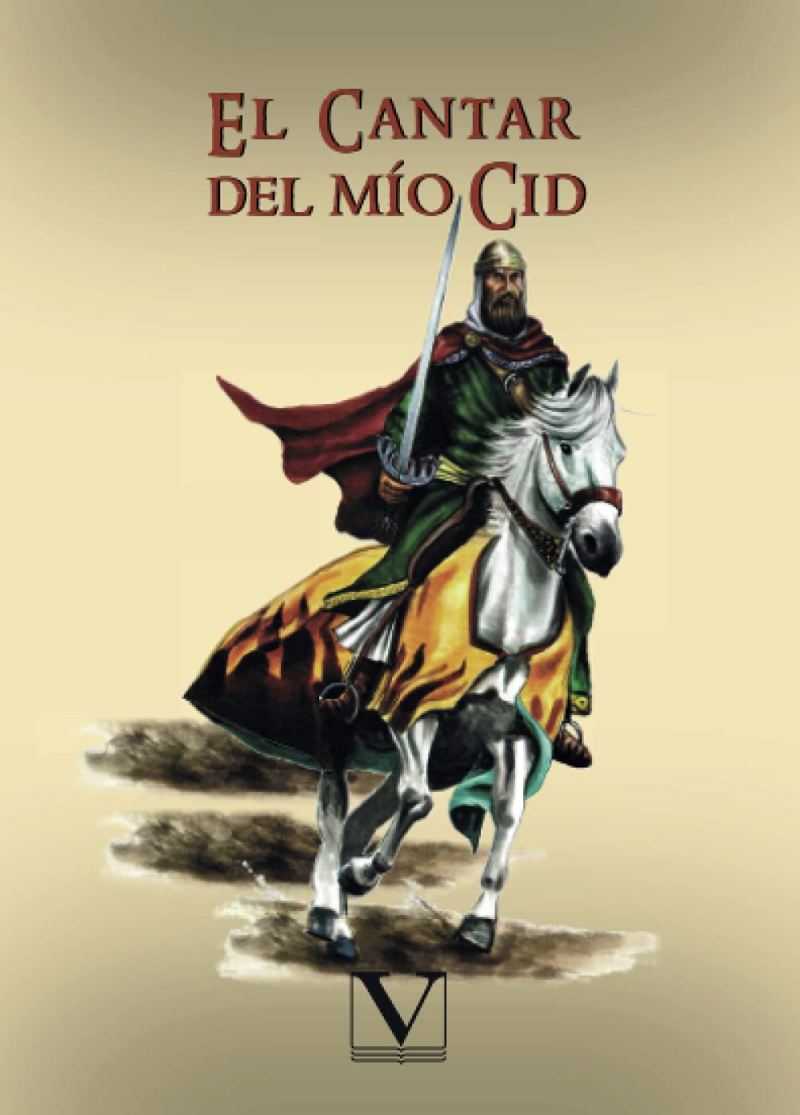
amazon.com 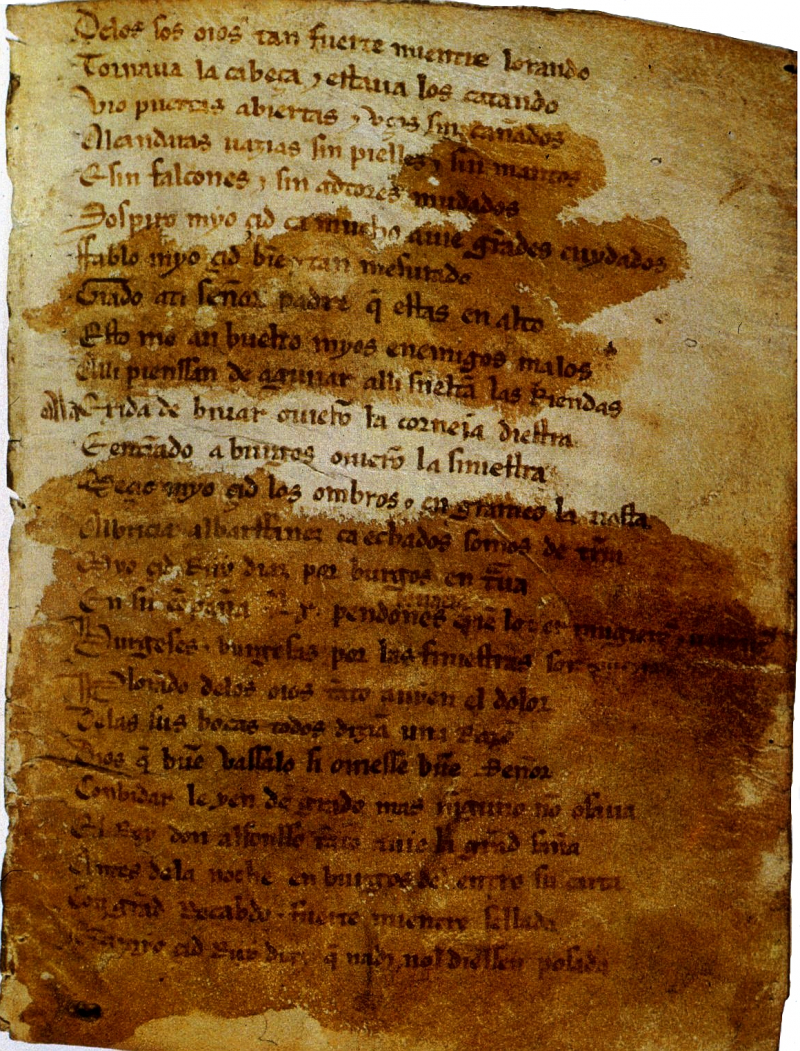
Cantar de mio Cid, Poem of my Cid -- en.wikipedia.org -
Around 1045, in the town of Vivar in the Castilian principality close to Burgos, Spain, Rodrigo Dáz de Vivar or Ruy Dáz de Vivar was born. Diego Lainez, his father, served as a soldier in the battle of Atapuerco in 1054 between King Garcia Sánchez III of Navarre and King Ferdinand I of León. According to certain historians, Diego was a progeny of Lain Calvo, a renowned duumvir (magistrate) in the Court of Ordo II (King of Galacia, who reigned from 914 to 924). Rodrigo's mother whose name is unknown was a niece of the Spanish minister Nuo Alvarez de Carazo. She gave her baby the name Rodrigo in honor of her father.
When Rodrigo Daz de Vivar was born, the southern two-thirds of the Iberian peninsula had been mostly captured by Islamic armies as part of the Arab conquest that had started in the eighth century CE. Around 1045, in the town of Vivar in the Castilian principality close to Burgos Spain, Rodrigo was born. One of the interesting facts about El Cid is he had several aliases. His full name, Rodrigo Diaz de Vivar or Ruy Díaz de Vivar, and the Moors' (Arabs living in medieval Spain) nickname of El Cid, which translates to "The Lord," have previously been mentioned, but he also went by a few other names. If Rodrigo was too formal for someone, they might call him Ruy, the moniker he goes by in an anime from the 1980s about El Cid's youth. The Christians dubbed him El Campeador, Spanish for "The Battlefield" or "The Warrior," whilst the Moors referred to him as El Cid. He had to be a brutal warrior to obtain such a title.
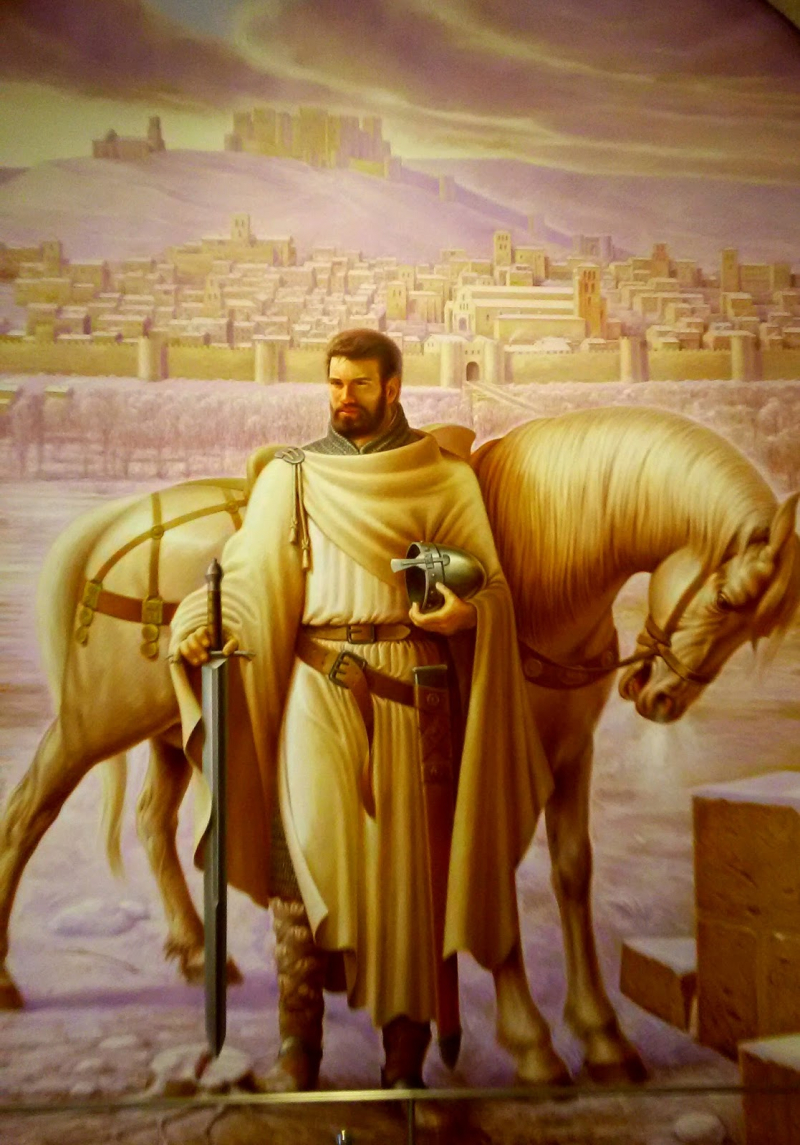
www.theguardian.com 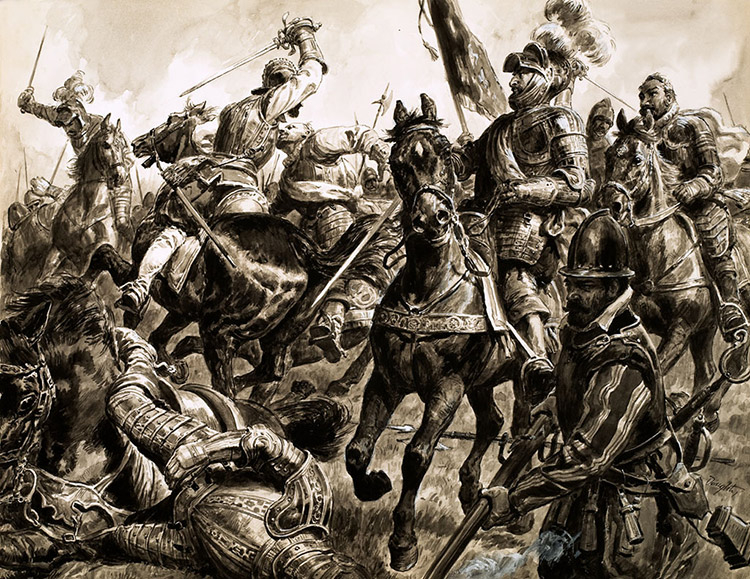
www.theguardian.com -
To put it mildly, El Cid's relationship with King Alfonso was complex. It all began with King Ferdinand, the father of Alfonso. He was raised at the home of Ferdinand I's eldest son, the future Sancho II of Castile, in the royal court. El Cid served Ferdinand, but after his death, Ferdinand left Sancho the more significant portion of the kingdom and gave Alfonso the smaller portion. El Cid sided with Sancho during the conflict between the brothers. Sancho chose the 22-year-old Cid to be his armiger Regis, or leader of the royal armies when he ascended to the throne of Castile (1065). The young Cid may have already established a reputation for military strength based on his early appointment to a significant position. He participated actively in the talks that led to the creation of al-Muqtadir as a tribune of the Castilian throne in 1067 while traveling with Sancho on a war against the significant Moorish state of Zaragoza (Saragossa).
Then Sancho passed away murdered without having any offspring, leaving Alfonso as the only potential successor. El Cid continued to serve Alfonso after that, but he was no longer considered a friend of the king, and his stature decreased. The new king seems to have made every effort to secure the favor of Sancho's most influential ally. Even though the Cid had now lost his position as armiger Regis to Count Garcia Ordóez (whom Alfonso had grown to hate), and his former influence at court had naturally diminished, he was still permitted to stay there. In July 1074, he married the king's niece Jimena, daughter of the Count of Oviedo. As a result, he joined forces through matrimony with Alfonso's historic royal family. Being forced to wed Alfonso's niece and joining El Cide to the royal line naturally made him furious about it. El Cid was banished from Spain because he disobeyed the king's frequent orders.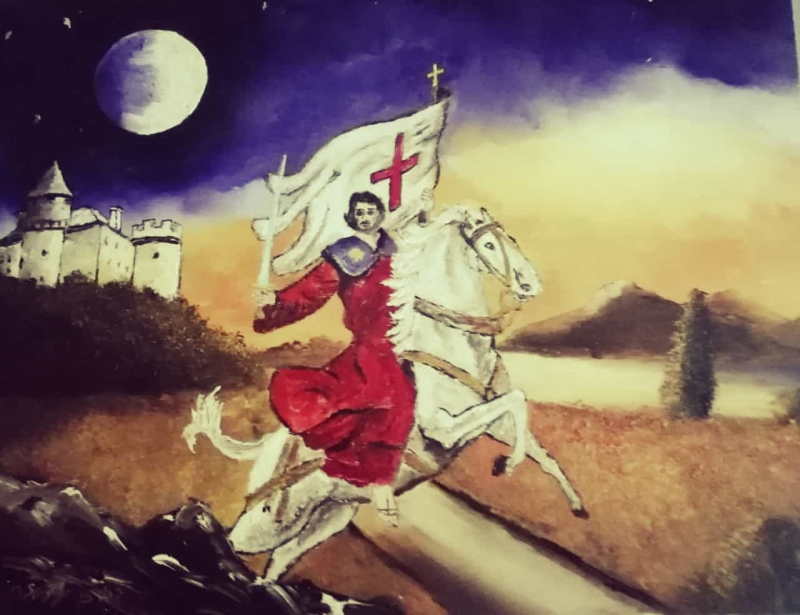
www.theguardian.com 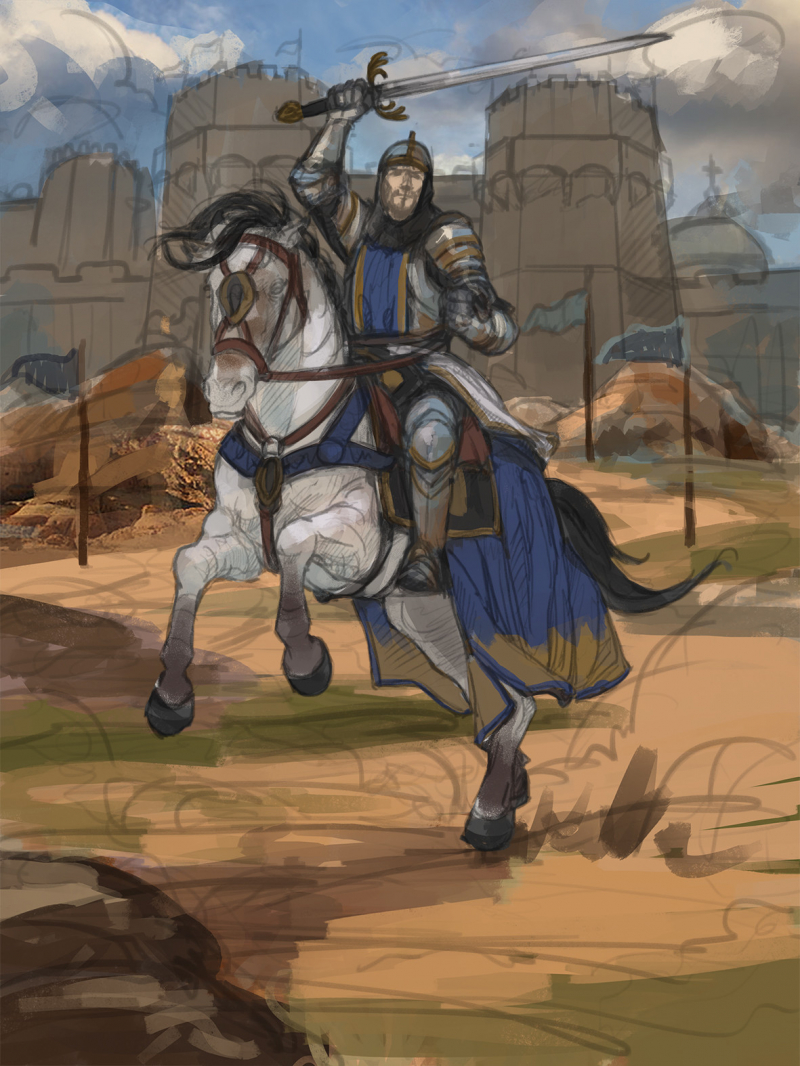
www.theguardian.com -
El Cid must be a skilled fighter with a moniker like "The Warrior," right? What specifically did he do to stand out, though? He uses psychological warfare as one of the intriguing and interesting facts about El Cid. He battled with his thoughts as much as his body. He may, for instance, give the impression of attacking while not doing so to make the adversary fearful or believe they were safe. El Cid would then launch a swift and violent attack when the adversary least expected it. He also valued collaboration. He would get his warriors together before every fight to discuss tactics. He encouraged cooperation among his troops. El Cid had a modest disposition and regularly incorporated advice from his soldiers. He was still willing to consider feedback from his men and the risk that he would make a mistake.
El Cid added a significant chapter to the tale in Valencia. Whether it was with regards to weaponry, strategies, or even cultural customs, Rodrigo had the remarkable ability to identify and take advantage of his opponent's weak points. He instinctively saw a flaw in the Almoravid army's precise tactical structure, stringent individual discipline, and tight control, which were meant to be its strengths. He concluded that his knights' advantages their proficiency with arms, the caliber, and weight of their armor, weapons, and horses, as well as their élan, might win out if he could assault before they had planned and deployed. At last, he decimated the Muslim soldiers with a cunning surprise attack, becoming the only Christian ruler of the 11th century to vanquish the powerful Almoravid army in open combat. Christian Europe was galvanized by the victory, which served as unequivocal evidence that the long-dominant Muslim armies could be defeated.
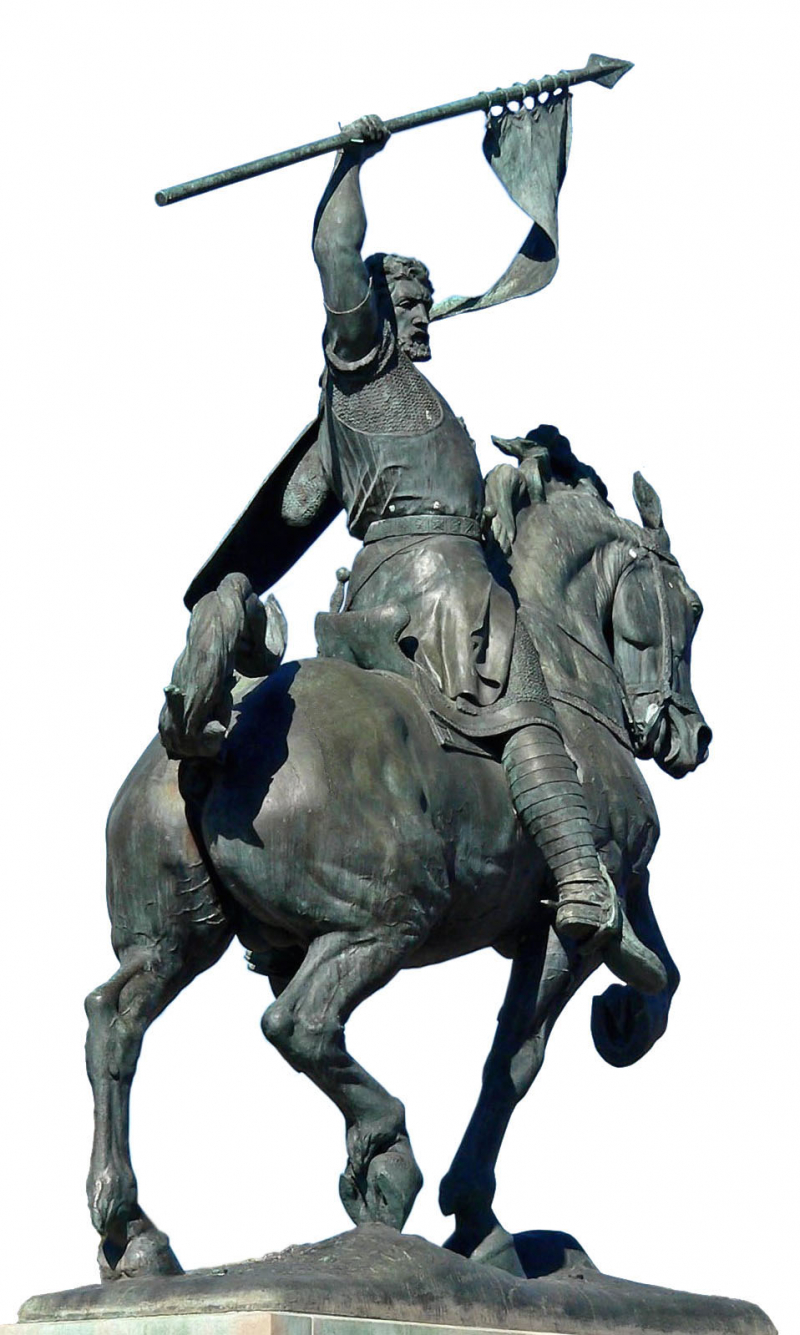
www.britannica.com 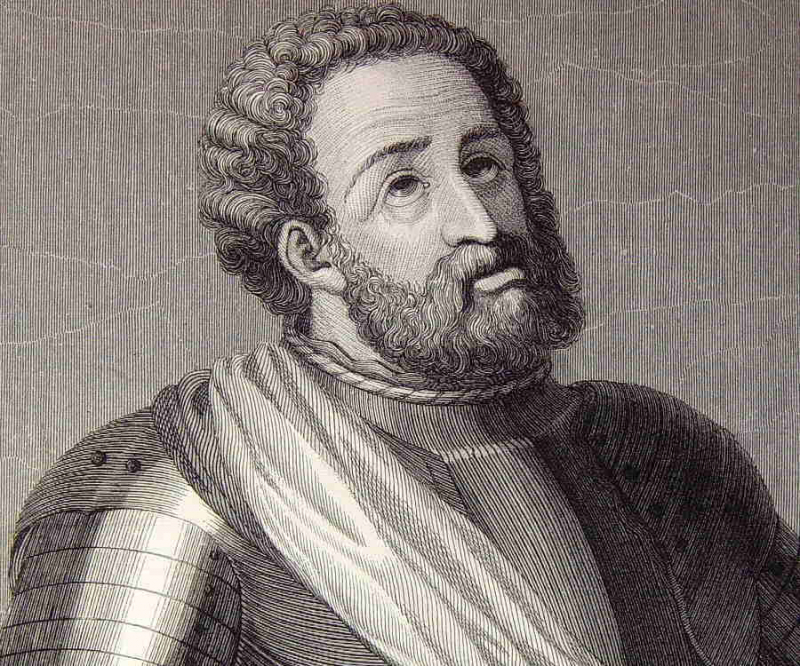
www.heritage-history.com -
The Cid's legendary battle horse, the white stallion Babieca, was obtained, according to a well-known tradition. This horse has several different origin tales. According to a different legend, El Cid acquired Babieca as part of the struggle to become the King's champion even though he was already a powerful warhorse. The horse, according to yet another tale, was a gift from a Barbarian.
This tradition says that Pedro El Grande, Rodrigo's godfather, was a monk in a Carthusian monastery. Pedro chose a horse from an Andalusian herd as his graduation present to El Cid. The monk yelled, "Babieca!" when El Cid chose a horse that his godfather considered to be weak and unwise (stupid). As a result, it was given to El Cid's horse. The gray colt developed into a beautiful white war horse, a characteristic Carthusian horse known for its docility, loyalty, stunning looks, and agile hooves. Nevertheless, the name stayed but grew into a powerful warhorse. This tale has a striking resemblance to the tale of Alexander the Great's dubious adoption of the gangly and easily startled Bucephalus, who subsequently went on to become one of history's most illustrious battle horses. Whatever the case, it is obvious that El Cid loved the horse dearly because some legends claim that he requested to be buried with the animal. "Babieca" now appears in several El Cid-related works.
Besides "Babieca", "Tizona" was the name of the fabled blade used by El Cid, which is one of the interesting facts about El Cid that many people are curious about. To at least partially confirm its identification, as several purported. The sword recently underwent metallurgical examination, which proved that the blade was produced in Moorish Cordoba in the eleventh century and was in reality partially forged with Damascus steel. Tizona's have surfaced over the years. Due to the unexplained disappearance of the production techniques, Damascus steel has its unique attraction. Although steel has been replicated in modern times with a similar appearance, it is not the same. Dark ripples and the blade's exceptional longevity serve as indicators of the steel.
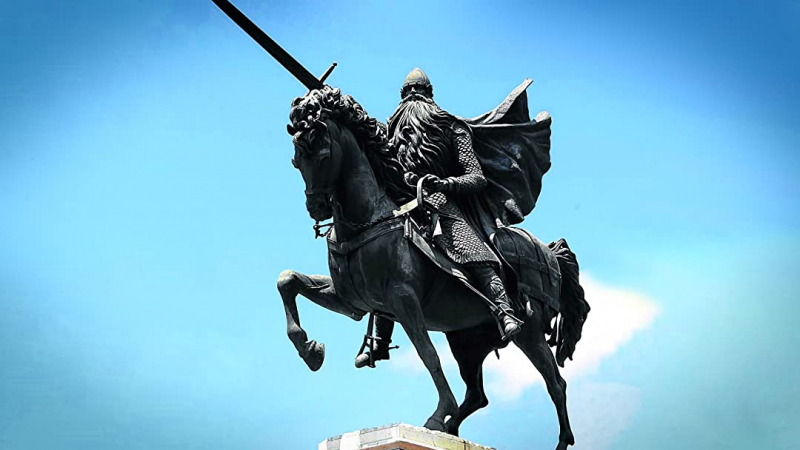
en.wikipedia.org 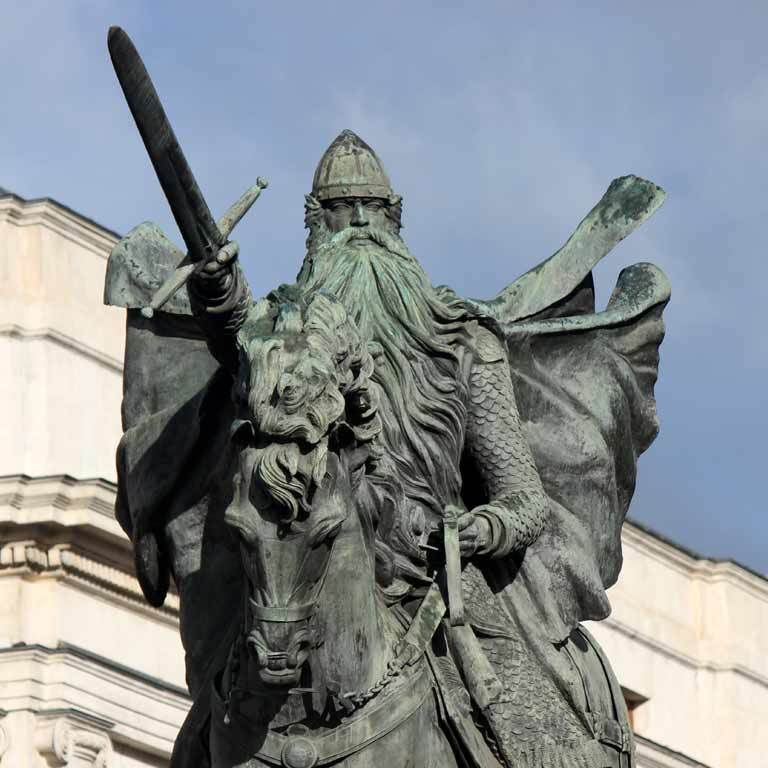
en.wikipedia.org -
More than a millennium has passed, but El Cid is still a legend. "El Cantar de Mio Cid" wasn't the last piece of El Cid-related media. From the 12th century up to 2016. El Cid has appeared in fiction. He was featured in several plays, operas, two movies, anime, a Spanish sci-fi program, Age of Empires, and Medieval Total War, among other works.
The French dramatist Pierre Corneille adapted one of his most well-known tragicomedies, Le Cid, on a play by the Spanish author Guillén de Castro from the early 17th century called Las Mocedades del Cid. In addition, several Spanish Romantic poets found inspiration in him, including Juan Eugenio Hartzenbusch, who authored La Jura de Santa Gadea, and José Zorrilla, who composed La Leyenda del Cid, a lengthy poem. The novel Sidi: Un relato de frontera by Arturo Pérez-Reverte was released in 2019. One of Spain's most well-known progressive rock bands, Crack, issued their sole album, Si Todo Hiciera Crack, in 1979. The album included the song "Marchando Una del Cid," which is based on the epic legend of El Cid. Nippon Animation produced the animated television program Ruy, the Little Cid in 1980, which was based on El Cid's youth. In "The Legend of Raloo," episode 16 of the first season of Jakers, El Cid is mentioned as motivating Ferny towards his Spanish origin.
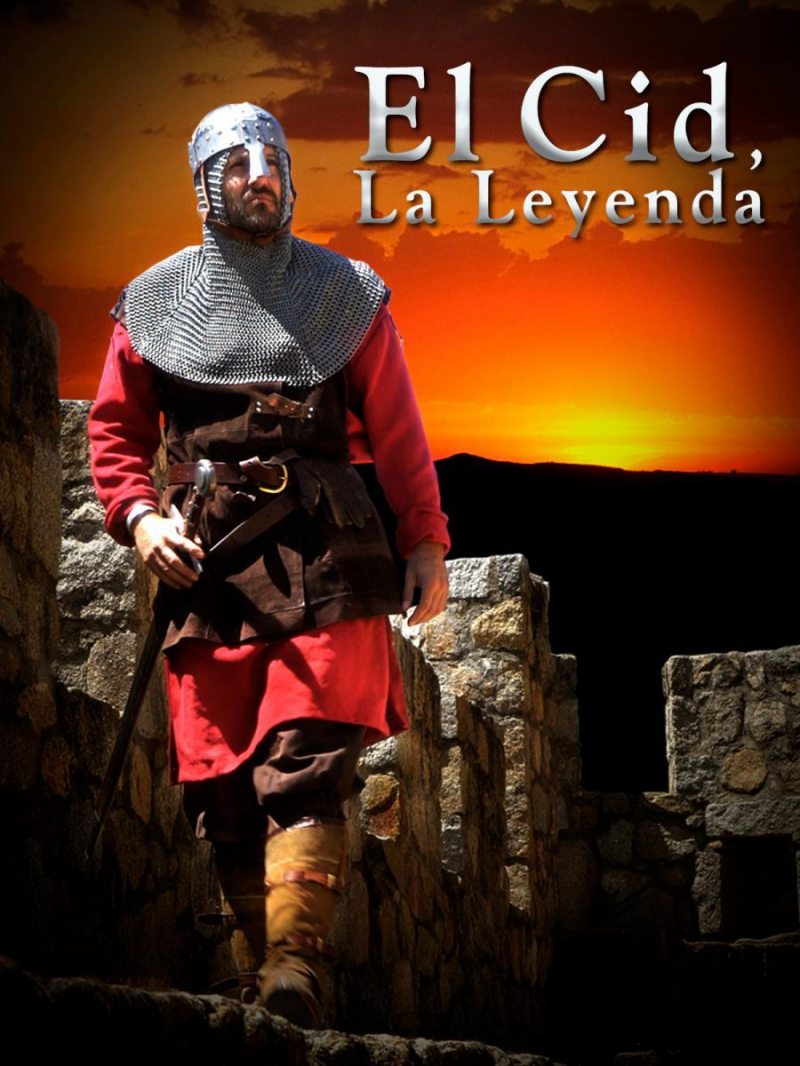
amazon.com youtube.com -
El Cid, as was previously said, only sided with Alfonso when Sancho passed away, but this wasn't the last time he changed sides. El Cid began fighting against the kingdom he had formerly been a member of and served the Moor after being banished. El Cid's banishment did not spell his demise, either physically or as a significant personality. He gained knowledge of Arabic legislation and local politics during this period.
El Cid served both Yusuf al-Mutamin and his son Al-Mustain II as a mercenary and offered his services to the Moorish ruler of Zaragosa in northeastern Spain in 1081. The kings of Barcelona, Ramón Berenguer II (1076–1082) and Berenguer Ramón II, Count of Barcelona (1076–1097), declined El Cid's offer of assistance. Then he traveled to Zaragoza, where he was given a warmer reception. Yusuf al-Mutamin (1081–1085), who held Zaragoza itself, and his brother al-Mundhir, who ruled Lérida and Tortosa, jointly dominated this Muslim area. El Cid joined al-army Mutamin's and successfully repelled the attacks of Ramón Berenguer II, Sancho I of Aragon, and al-Mutamdhir at Zaragoza.
In 1086, Alfonso called El Cid back from exile when the Berber Almoravids attacked the peninsula. El Cid voluntarily went back and contributed to the loss at Sagrajas in 1086. He only briefly enjoyed Alfonso's favor before being sent back into exile in 1089. El Cid departed the city to establish himself as an independent leader on the eastern Iberian peninsula after being banished from Alfonso's court for the second time. He battled the Muslim Taifas and exacted a hefty payment from them before taking Valencia on June 15, 1094. In 1094 and 1097, two Almoravid armies tried to overthrow him, but he repelled them both. The siege ended El Cid had established his kingdom along the Mediterranean Sea coast. He took control of Valencia and established a kingdom that was accessible to both Christians and Arabs.
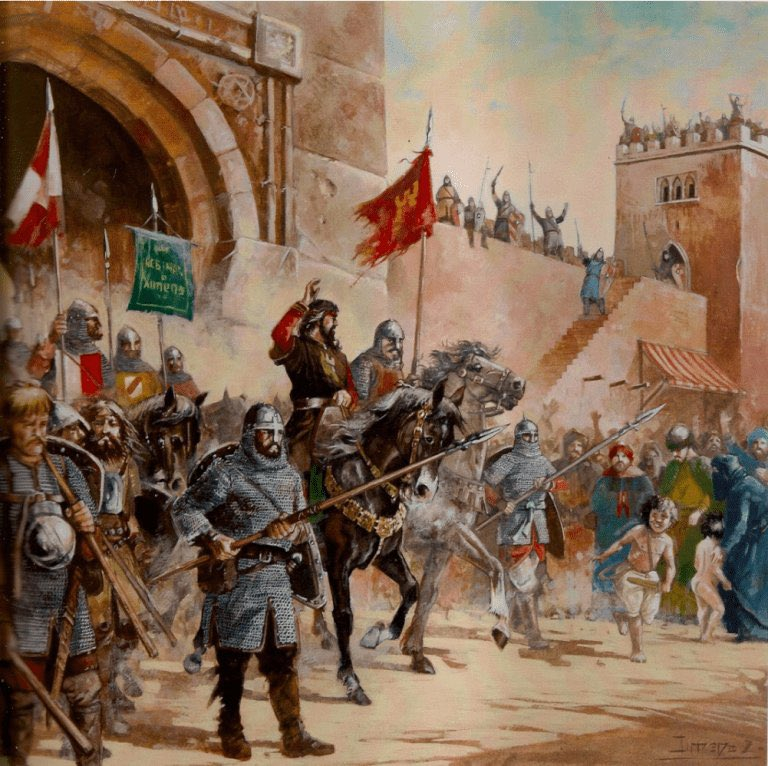
www.theguardian.com 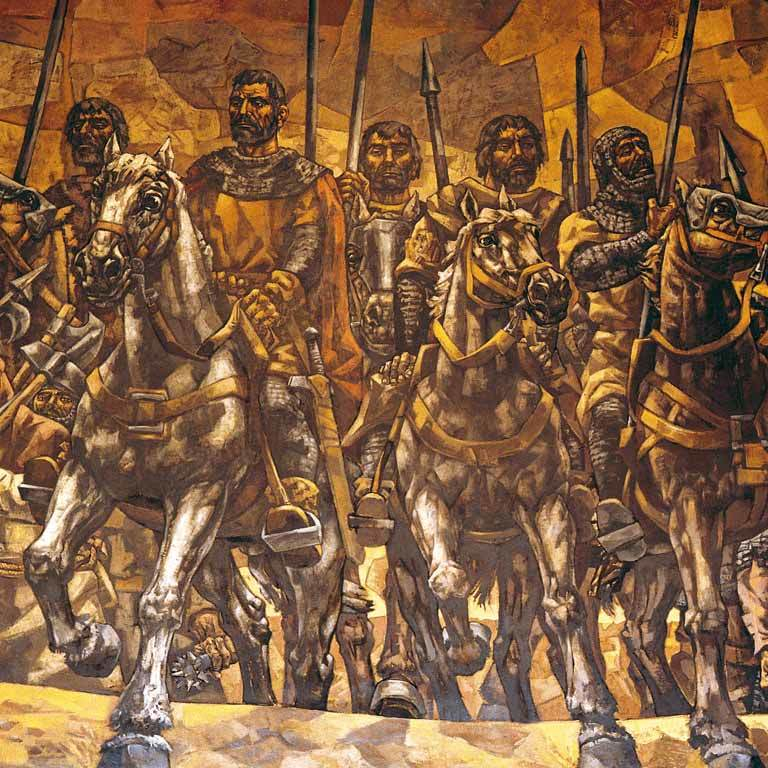
www.theguardian.com



























